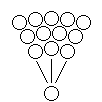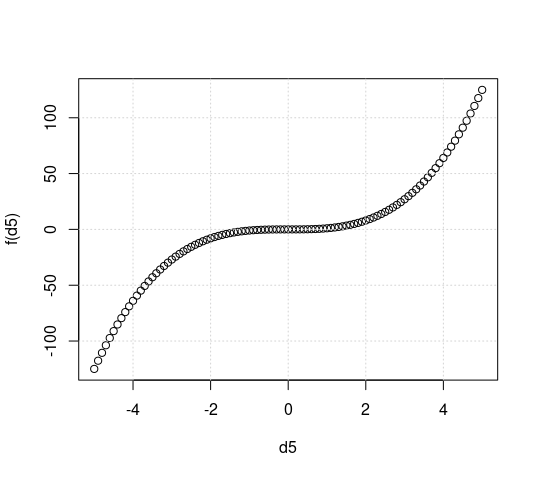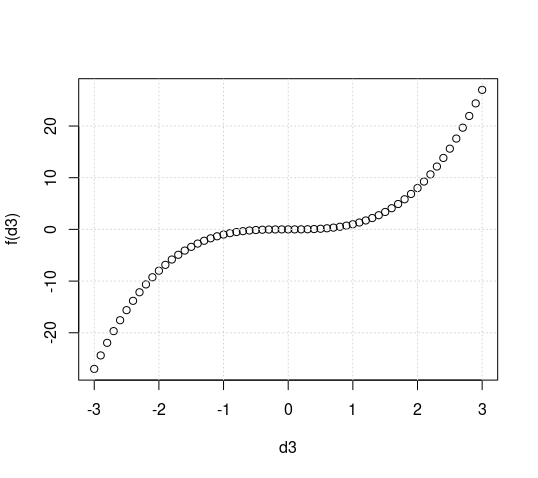Leaderboard
Popular Content
Showing content with the highest reputation on 10/09/20 in all areas
-
Well, since Markus has expressed his desire to join a Monastery, I think that definitely answers the OP question. But, some words to Markus... ( no offence meant, just trying to lighten the mood ) A young monk arrives at the monastery. He is assigned to helping the other monks in copying the old laws of the church by hand. He notices, however, that all of the monks are copying from copies, not from the original manuscript. So, the new monk goes to the head monk to question this, pointing out that if someone made even a small error in the first copy, it would never be picked up! In fact, that error would be continued in all of the subsequent copies. The head monk, says, “You make a good point, my son.” He goes down into the dark caves underneath the monastery where the original manuscripts are held in a locked vault. Hours go by and nobody sees the head monk. The young monk gets worried and goes down to look for him. He sees him banging his head against the wall and wailing. “We missed the R! We missed the R! We missed the R!” “Father!” cries the young monk. “What’s wrong?” The head monk with tears in his eyes replies, “The word is CELEBRATE!"3 points
-
2 points
-
CTCs have 'provided a mechanism for time travel for quite some time, but they provide no answers for the causality breaking paradoxes that arise. I haven't looked at the paper, and probably wouldn't begin to understand it, but I assume it attempts to provide those answers. And saying CTCs provide a mechanism for time travel is being generous, there is still the problem of space-like translation via wormhole ( or some such device ) to achieve time travel. CTCs just move the goalposts of the problem from one ( current ) impossibility, to another ( current ) impossibility.2 points
-
1 point
-
About the fate of the universe, there are multiple theories. Although dark energy appears to be winning over gravity and with the increasing velocities of the galaxies, it is quite likely that dark energy will end up ripping apart galaxy clusters, then galaxies themselves, down to solar/planetary systems and ultimately down to the dominions of electromagnetism (intermolecular bonds), strong nuclear force (atomic structure) and weak nuclear force (protons and neutrons). Quite fair and unbiased. But if I quote a scripture verse of the essence "And the heavens and Earth were wrapped, and We tore them apart. And if We desire, We may return them to that state again", most atheists get triggered. My statement at this point is that we do not know the outer cosmic structure of our universe (since we live inside of it, our existence being confined to the spacetime dimensions), it is quite possible that the rending apart of spacetime from our perspective might as well be wrapping them back together to pre-bigbang state. The ugly part is, if I present this possibility (remember, I am not saying it is so, I am saying it may be so) without the reference to the scripture, I get unbiased, neutral analysis of this possibility. However, if I announce that I got this idea from a scripture verse, most laymen instantly denounce it as an erratic assumption simply because whatever is in a scripture can "obviously" not be scientifically valid. Thankfully I get this attitude mostly from uninformed laymen. Proper scientists and researchers mostly analyse my postulates without bias, without caring the least where I got the idea from. Some Dawkins fans get triggered though, regardless of how well informed and educated they may be.1 point
-
We are almost certainly limited this way, but that’s why we build instruments. They can be sensitive to signals that humans aren’t Science is not the search for truth. Science is our attempt to discern how nature behaves, because behavior is what we are able to test.1 point
-
Had some time for a followup, here is a short introduction to minimax. Minimax is a kind of backtracking algorithm that is used to find the optimal move for a player “A”, assuming that the opponent player “B” also plays optimally. It can be used in two player turn-based games such as Tic-Tac-Toe. Every board state has an associated value. A positive value means the board is in favour of player A, for instance if A has a stronger position in Tic-Tac-Toe. Negative values means player B has the upper hand. The values of the board states are calculated by some heuristics which are unique for every type of game. In Minimax the two players A and B are called maximiser and minimiser. The algorithm, when starting from some state where it is player A's turn, will assume that A will make the move that maximises the value associated with the next step. In the next level in the search tree the algorithm will assume player B makes the move that minimises the associated value. This goes on until a final winning state is found or some optimisation stops the search. (out of scope for this discussion) Due to the backtracking the algorithm will reject moves that initially looked good but later turned bad. An example being a chess move where A threatens B’s king but opens up for B to move into an even better position for instance a check mate. Typically the search tree may be too large so that the algorithm can’t evaluate all possible future moves more than a limited amount of steps ahead from the current state. Initial questions: Is your game turn based? Is luck involved (for instance a dice rolling) Note that the topic in the opening post is very broad (ind interesting!). Answering this in detail requires writing considerable amount of text, maybe better suited for a book.1 point
-
Redlining and greenlining. Please explain. I grew up in what could be termed a ghetto or "hood" environment in Glasgow. I don't know what your background was, but we were all poor. The poverty was just a temporary shortage of funding as I understood when we grew up. Doctors, PhD's and scholars came out of that environment, yet a large portion of the people believe in the hype of the ghetto and what it is meant to represent - trying a little bit, failing and then giving up. That archetype is what dominates ghetto environments . The way out is to sell drugs and get rich quick, or die trying. The criminals offer young children a different role model of easy acquisition of wealth to surround oneself with wealth. This is an erroneous and dangerous mindset and philosophy passed on from father to son in my opinion. Please do elaborate on redlining and greenlining....1 point
-
Back to original topic: yes, I think it is very possible for a person to believe in a religion and be a scientist. I, for example, am a science journalist and an orthodox Muslim. I am proficient in vertebrate paleontology and astronomy as my subjects of specific interest in science journalism. Yes, I believe in evolution and that Earth was created 4.56 billion years ago and humans never coexisted with non avian dinosaurs. The only difference is that I believe that evolution is directional and not haphazardly random. One thing that enrages me is that atheists, even ignorant ones, consider science as their dominion and prerogative. When I introduce myself as a Muslim, the instant knee-jerk reaction I get is the treatment of a science-denier. As if being a believer equates to being a neanderthal brute or even baboon. Another, very dangerous trend I have observed is that laymen treat scientific theories and postulates as hard and undeniable facts. In gray areas of uncertainty, they will always, without an exception, take the postulates which run antiparallel with religious teaching and then present it as a fact, decrying criticism from me by calling me a science-denier. This trend is very dangerous. Not only for social harmony and tolerance, but also for the very progress of science itself, as a neutral, unbiased discipline based on objective observations and transparent deduction.1 point
-
The top protocol might be useful to you. It's p2p and encrypted. It's intended as a instant messaging protocol but there's nothing stopping you from building an application on top of it instead. https://tox.chat/ Also, you might find it useful to play around with tox using the ratox client. https://ratox.2f30.org/1 point
-
I disputed the truth/validity of a moderators pride? Uhm... Okay. The mods here don't strike me as the sort to care if I disagree with them or not and I doubt they have plans for retribution. All I know is, I'm glad you're not a moderator.1 point
-
Let's be a little more rigorous. It's not entirely accurate to say findComputerMove is not returning values. The problem is it's not returning a tuple and is instead returning the None type. Python is strongly typed. Let's go back and rewrite a previous code snippet: # Original code # a, b, c = self.findComputerMove(foo, bar, something) result = self.findComputerMove(foo, bar, something) a, b, c = result The first assignment is just a normal variable value assignment. At this moment, Python doesn't assert that the type returned by findComputerMove be a specific type. It will accept an integer, float, string, and even a tuple. Whatever type that findComputerMove returns, defines the result's type. However, the second assignment isn't the same as the first. It's a tuple assignment. The = symbol is a tuple assignment and it expects the right side to be a type that is iterable. And it must be the same length as the left. It's short for the following: result = self.findComputerMove(foo, bar, something) a = result[0] b = result[1] c = result[2] Here's some code about types for you to look over and think about: >>> def do_nothing(): ... pass ... >>> foo = do_nothing() >>> bar = None >>> type(foo) <class 'NoneType'> >>> type(bar) <class 'NoneType'> >>> foo is bar True >>> foo is None True >>> foo == bar True >>> foo == None True >>> def do_none(): ... return None ... >>> do_none() is do_nothing() True >>> do_none() == do_nothing() True >>>1 point
-
An initial step in this case could be to understand the Hill Climbing* algorithm. Hill Climbing algorithm is straight forward and different variants are available making it easier to discuss the difference between heuristics. Once the basics are understood we may introduce minimax algorithm that is useful in two player games. Alpha-Beta pruning goes well together with minimax algorithm. No. The heuristic you use to find an answer to your questions are not the best idea. You are posting too few details resulting in too much guesswork and/or many skilled members opting not to enter the discussion at all. There are too much room for misunderstanding and discussion progress slowly. In this specific case; how would one know what is a good vs a bad heuristic without having a clue about the rules of the game and the conditions for winning the game? Or are you maybe asking about the much more general case; two player games and heuristics in general? *) I know from other posts that OP has specific interest in understanding that specific algorithm, that's why I pick that as a first option in this case. It is not necessarily the optimal choice in a more general context. The level of assumed background knowledge have an impact on recommendations.1 point
-
I did that for my FYP https://github.com/davidmather/fourthYearProjectImplementation It is supposed to be a multilingual videocalling service e.g. I talk to you in English and you hear French, German etc. and you should be able to specify commands to the other end of the call by talking like show me the kitchen for a call linked to your house. I have code in the frontend javascript for a download which sends a file to the person on the other end of the call via WebRTC. That should be what you are looking for?1 point
-
1 point
-
Do you know IPFS? https://fr.wikipedia.org/wiki/InterPlanetary_File_System According to some people IPSF will become the standard formerly HTTP.1 point
-
What is left to discover or invent for the hobbyist scientist/engineer? An amateur engineer must therefore have some knowledge, since he can be an scientist/engineer in your title. Here is the grale in science: Understanding quantum mechanics with an interpretation in classical physics. But you might think that the simplest things are already discovered and that only the complicated things remain to discover.1 point
-
Yes, sorry, I was writing on my phone so I didn't have time for a full reply. The two exceptions you mention are actually a little misleading. I believe that in reality, they do fill the 4s orbital first, then as electrons start filling up the 3d orbitals one of the 4s electrons moves into the 3d to give 3d54s1 / 3d104s1. It is not a case of only putting one electron into the 4 s and then filling up the 3d orbitals, which is maybe where you are confused with Zn. The reasons for this come down to stability, as you mentioned. It is more favourable to have a completely full or half full set of d orbitals.1 point
-
Do I understand it correctly that the issue you see is the following: One unit in x-direction is a different amount of pixels (or cm on paper, if you'd print it out) than one unit in y-direction. Is that what you mean? That is indeed the case. I have never considered a problem. In my experience, this is the default behavior of most plotting engines. It is normal that in addition to looking at the shape of curves you also have to look at the numbers on the axes (small effects can often look large if you just zoom-in into the graph). And I do think there are more use-cases for having different spacings in x- and y-direction than for having the same spacing. In fact, it is very common that x- and y-values are not even comparable (e.g. one can be a time and one can be a number of people). If you really want to have identical spacings, I think you can at least approximate that by setting the ranges by hand and forcing the aspect ratio or the size of the picture to fit to the ranges (same height and width of the x- and y-ranges are the same, double width if the x-range is double the y-range, etc). To set the range by hand, you can use curve(x^3, -3, 3, ylim=c(-3,3)); grid() Not sure how to set the window size by commands, but it should be possible. For an approximate solution, if you use R-Studio (which I really like for working with R) you can just resize the plot window to have the aspect ration you want and then export the image.1 point
-
I kind of did what in hindsight I feel should have been provided by you in your starting post: Created the plots you spoke about and posted them here. The code is f = function(x) x*x*x d3 = seq(-3, 3, 0.1) d5 = seq(-5, 5, 0.1) dx = seq(-3, 5, 0.1) plot(d3, f(d3)) grid() plot(d5, f(d5)) grid() plot(dx, f(dx)) grid() The created plots are attached. I see no problem with them. I am not aware of any technical problems that R has. While not the question: I do not recommend to get used to R just because it has the reputation of being the most common software used in statistical data analysis. The statement may actually be true. And R is not bad, either. But I feel that Python can already compete with R in terms of (advanced) functionality, and will be the future. And for just plotting functions, there should be much easier solutions / more comfortable solutions (I had used gnuplot with lots of success for a long time).1 point
-
When I saw that picture, I thought what a great metaphor: curse science - I'll do what I want. Then the campaign released the noble prize thing. What ever happened to egalitarianism?1 point
-
Holding people as the ultimate good sounds like bad philosophy.1 point
-
It's odd that most people understand that biodiversity is a good thing, but some idiots fail to realise that it applies to us too. Humans are not very big or very strong. Our major asset in terms of success is that we can communicate so well and cooperate. Our ability to communicate is the basis of our ability to cooperate, and it is that cooperation that explains why we are so successful. Perhaps the first group we should "cleanse" from the species is not the slow learners or the unfit, but those who don't understand the importance of cooperation. A way to identify them would be to see who thinks eugenics is a good idea, after all- you never seem to hear anyone saying "I'm going to kill myself because it will improve the gene pool" they always plan to kill others.1 point


















